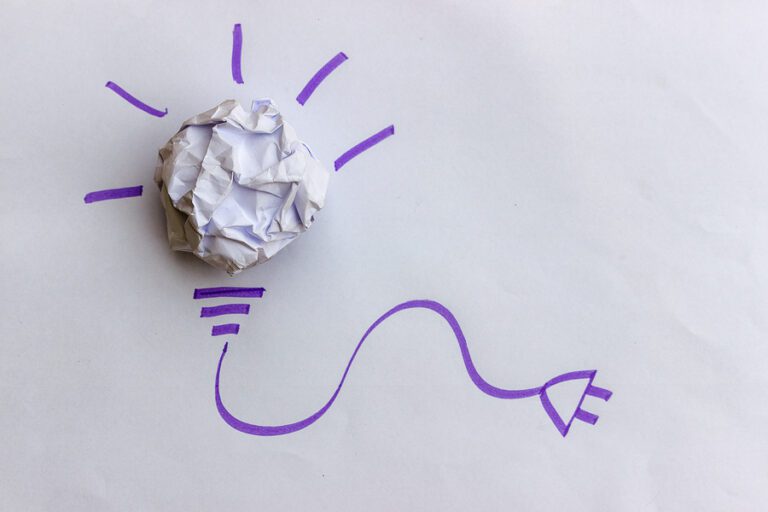Email Drip Campaigns: 11 Tips To Greatly Increase Sales Using Emails

I hope you enjoy this blog post. If you want Hello Bar to grow your leads, click here.
Author:
Ryan Bettencourt
Published
August 2, 2024
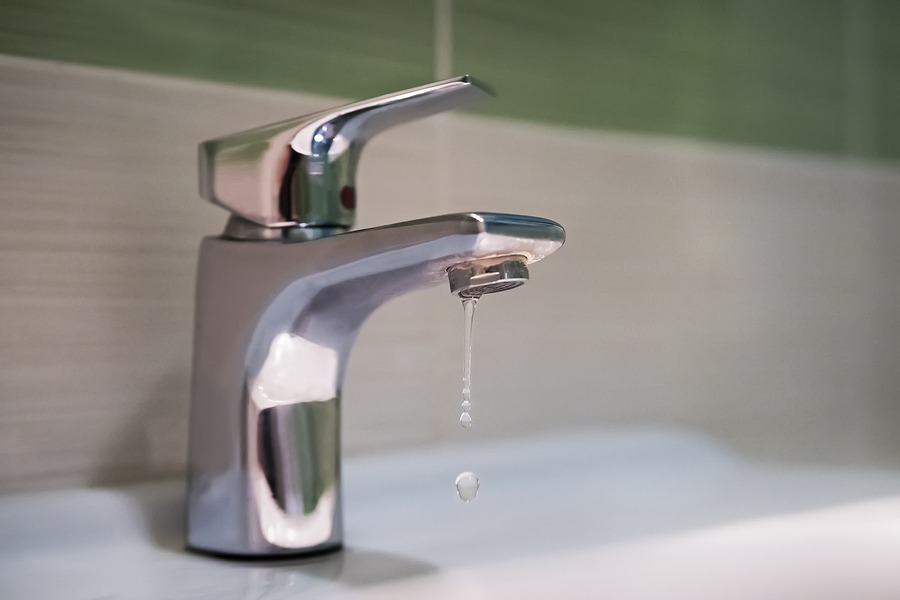
The drip of a faucet might not sound very exciting, but an email drip campaign can generate conversions, build relationships with your subscribers, and better position you to sell more products.
That’s always a good thing, right?
However, email drip campaigns only work when you design them with your audience in mind and with a full understanding of your goal.
Still with us?
Good.
We’ll share lots of information to help you become a better email marketer. Whether you’ve never set up email drip campaigns before or you’ve been sending them out for years, we’ll help you generate more conversions and, ultimately, sales.
Let’s jump in.
What is an Email Drip Campaign?
An email drip campaign is a series of emails you release to a segment of your email subscribers over a period of time. For instance, you might send six emails every Monday for six weeks.
In an email drip campaign, your goal is to build toward something. In other words, you’re nurturing your prospects toward an action you want them to take.
It could be attending an upcoming webinar, buying your product on its launch date, subscribing to your membership site, or starting a free trial of your SaaS subscription.
You might also have 10 email drip campaigns going simultaneously to different email list segments. One drip might go out to your top-of-funnel prospects who are just getting to know your business, while another goes out to people who have bought more than three of your products.
Feel free to segment your email list as much as you want. It helps you target your audience with the right message at the right time.
Back to email drip campaigns. The important thing to know is that you’re “dripping” information to your subscribers in brief emails.
What is Nurture Marketing?
Nurture marketing focuses on building and maintaining relationships with potential customers.
How?
Through nurture marketing, brands can guide prospects through the sales funnel by providing personalized and valuable content that addresses their needs and pain points.
Nurture marketing helps brands build trust with leads over time.
The goal is converting leads into loyal customers and enhancing long-term engagement and retention.
When Should You Use a Drip Campaign?
There are several instances when email drip campaigns can help you convert more leads into customers. Ideally, you want to offer something of value.
Here’s when you should use a drip campaign in your email marketing strategy:
Lead Nurturing
A drip campaign can help keep your brand top-of-mind and gradually move your leads toward conversion.
Customer Onboarding
Drip campaigns are also suitable for onboarding new customers. Through these campaigns, you can educate them about your products and services and provide other valuable information.
Engagement and Retention
Brands use drip campaigns to stay in touch with existing customers. Consider using a drip campaign to encourage customer loyalty and repeat purchases.
Abandoned Cart Recovery
When customers have failed to complete the checkout process, abandoned cart drip campaigns can help convince them to complete the purchase process.
Feedback and Surveys
Drip campaigns simplify the process of gathering customer feedback. They make it easy for customers to share their thoughts by systematically requesting input after interactions or purchases, improving your offerings.
Subscription Renewals
Leverage drip campaigns to engage users during subscription renewals. Send auto-renewal alerts with billing update links and prompt manual renewals with clear calls to action. Post-renewal, thank users and encourage them to share your service.
Unsubscribes
When a user unsubscribes, send a farewell message via autoresponder. Invite them to connect on alternative channels like Facebook or Twitter, as they might prefer different ways to engage with your brand.
You May Also Like:
- How to Build an Email List From Scratch: Start-to-Finish Guide
- How to Generate Leads from Email Marketing: 11 Ways
What are the Benefits of Using Email Drip Campaigns?
Using drip emails is a powerful marketing strategy that automates the process of sending targeted messages. They help to nurture leads, engage customers, and drive conversions by delivering relevant content at the right moments.
Below are five major benefits of using email drip campaigns in your email marketing strategy:
- Automates Communication
Automating email sequences streamlines your communication process. This saves time and ensures consistent, timely messages reach your audience without manual intervention.
- Improves Customer Engagement
With email drip campaigns, you deliver timely and relevant content to your email subscribers. This improves customer engagement and makes getting feedback easier.
- Enhances Personalization
They help you deliver tailored content to each recipient based on their behavior and preferences. Personalization creates a more relevant and engaging experience, boosting customer satisfaction and loyalty.
- Promotes Products and Content
You can highlight your products and content efficiently with targeted drip email campaigns. Presenting valuable information and offers directly to interested recipients drives engagement and conversions.
- Nurtures Leads
Drip campaigns help nurture prospects by guiding them through their decision-making journey with timely follow-ups. With drip campaigns, you can build trust, provide valuable information, and convert prospects to customers.
How Do You Write Drip Campaign Emails?
Now we get to the creative side of the process. Great copywriting, good headlines, compelling email subject lines, and other assets can help make your campaign a success.
We’ll walk you through some of our best tips for creating successful drip campaigns so you can get a leg up on the competition.
Write Your Drip Emails in One Session for Consistency
One of the most important things about email drip campaigns is that they need to tie together. You can always send out weekly emails to your subscribers, but a drip campaign consists of several emails that fit together as part of a whole.
Think of each email as a chapter in a story. If Chapter Two doesn’t immediately lead into Chapter Three, readers are going to wonder what’s happened to those characters.
It’s best to write them all in one sitting, but don’t get intimidated. Your emails might only be a few paragraphs each, so you can easily knock them out in a short session.
Focus on Quality
Just because you write your email drip campaigns in one sitting doesn’t mean they’re ready for their big reveal. Let them sit on your hard drive for a few days, then go back and read them — one right after the other.
Look for inconsistencies, grammar mistakes, logical fallacies, or anything else that might unsettle or irritate your readers. Pay attention to flow.
Most importantly, ensure each email imparts something of value. If your subscribers feel like they’ve wasted their time after reading your emails, you haven’t done your job.
Use Short Paragraphs In Your Drip Campaign Emails
Big blocks of text are intimidating, and you have to remember that at least a few of your subscribers will read these emails on a small device, such as a smartphone or tablet. Consequently, you have to keep your paragraphs short.
It’s a concept best illustrated visually.
Here’s one example of an email formatted using dummy text:

Here’s example two. It’s the same dummy text, but with four or five lines per paragraph.

Which one of these emails would you rather read?
It doesn’t matter if the information is the same. Walls of text intimidate readers, so they’re less likely to read them. Give the eye some breathing room with short paragraphs that create negative space.
Write Short Emails For New Prospects
You can get away with longer emails when you’ve been emailing a subscriber for several months. They know and trust you, so they’re more willing to give you their time.
However, when creating email drip campaigns for new subscribers, keep your messages short. Aim for three or four paragraphs at most,
You have two options if you need more words to get your message across.
The first is to use images or other visual elements to break up the text. Imagery makes your emails more engaging and increases the chances of being read.
The second is to break up that email into two emails. You can even label them as Part 1 and Part 2.
Do Not Be Scared to Add A P.S at The End of Your Drip Emails
Time for a brief linguistics lesson.
P.S. stands for “postscript,” which is derived from the Latin postscriptum. Still with us?
Directly translated, postscriptum means “written after.” In other words, it’s something you tack on to the end of an email, letter, or text.
A great way to use the P.S. in an email drip campaign is to tease the next email you send. For instance, it might look like this:
P.S. Look for another email next Monday. We’ll teach you how to do X. You won’t want to miss it!
In this example, we’re sending the customer a very simple message: “You’ll hear from us again, and we’re not going to let you down.”
Plus, it gets the subscriber excited for your next installment.
Get Personal With Your Readers
Business doesn’t always have to be about business.
We’d never send marketing emails that detail something inappropriate or intimate. But We might share a funny anecdote or a story of a personal failure to relate to our audience.
When you open up about your personal life, you create a connection with your subscribers. They can see themselves in your story and know they’re not alone.
Here are a few rules of thumb to help balance the personal information you share:
- Don’t tell your subscribers anything you wouldn’t tell your mom or dad.
- Avoid talking about other people unless you get their permission first.
- Steer clear of information people could use against you later.
- Ask yourself whether you would be comfortable if your kids read it.
If you still feel good about sharing the story, go for it.
Tell Captivating Stories to Keep Your Readers Entertained And Don’t Forget to Use Suspense
A total of 62% of B2B marketers rated storytelling as an effective content marketing tactic during a survey.
There’s a reason for that. We crave suspense.
It’s why we’re willing to sit through a three-hour movie at the theater. Even if it’s not in the suspense genre, stories are built on suspense. Otherwise, why would people bother consuming those stories?
If you can tell true stories and build suspense, you’ll enjoy great success through email drip campaigns.
Make Your Emails Feel Like A Continuous Conversation Between You And Your Prospect
Some of the best emails from marketers have read like personal notes from a friend or family member. They might look something like this:
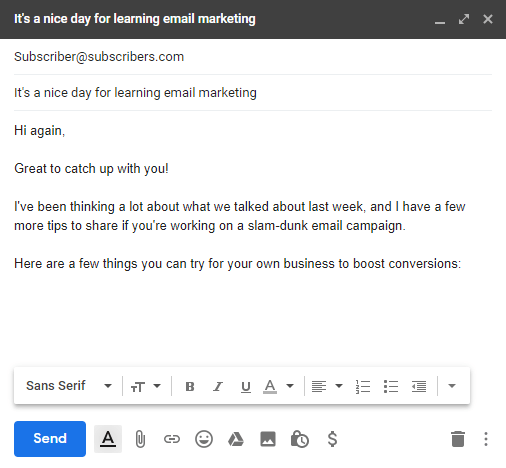
You May Also Like:
- How to Nurture Leads: Tactics and Experts Tips for 2024
- 35 Lead Magnet Ideas and Examples to Convert Visitors Into Leads
Obviously, we’d have to finish the email with our promised tips, but you get the idea.
It’s okay to use familiar language. In fact, it can even improve your deliverability.
Email clients like Gmail and Outlook look for reasons to send your emails to the Promotions folder. You won’t find your way into the inbox if you’re constantly writing like a marketer.
Try to limit complex graphics, video embeds, and other big images. Those are huge flags for email clients who provide deliverability for the most relevant emails — not the ones that their users don’t want to read.
Use Great Email Subject Lines To Get Your Readers’ Attention
Email subject lines aren’t easy to craft. In fact, we devoted a whole article to the subject.
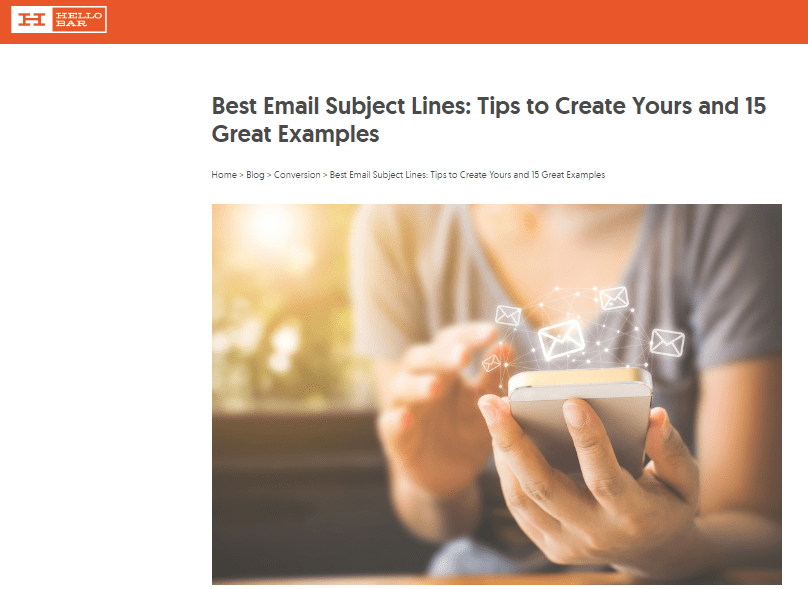
Give it a read if you’re struggling with email subjects.
In the meantime, focus on providing value in the subject line.
You might have seen many email subjects like the following:
- Act now to get your 20% discount!
- Free gift inside!
- You’re invited! (More details inside)
These are standard email marketing messages, but they’re not compelling. Why? Because we’ve seen them thousands of times.
They’re like part of the background.
We’ve mentioned TheMuse’s emails before, but this subject line struck out because of the value it provides:
![]()
When you open the email, the sender lets you know what question will be answered. Engaging subject lines can increase your email open rate.
That’s exactly the curiosity you want to engender in your prospects. If you’re thinking about changing industries, You’d definitely want to know how you can prove value.
Create Urgency In Your Emails By Setting Deadlines
There are good and not-so-good ways to create urgency in your emails. Setting deadlines is a good one, whereas manufacturing deadlines are bad.
If you send an email every week promising a discount on your most popular product, that’s fine. But if you say the offer’s only good for 24 hours, you’ll alienate your customers.
They know there’s no 24-hour deadline because they see the same email every week.
In email drip campaigns, you can create urgency by offering an exclusive deal just for subscribers. In other words, you want to reward them because they’re reading each email in your series.
Add a Good Call To Action To Your Drip Email Campaign
Your call to action (CTA) tells your readers what you expect them to do next. You could ask them to forward your email to a friend or to click on a link to your latest blog post.
CTAs can also take subscribers to landing pages or sales pages, but don’t overuse it. You’re trying to generate goodwill.
Consumers are smart. They know companies email them when they want to sell products or services. That’s a given. If you spend time building a relationship and providing value for free, you’ll have much more luck with the conversion when you eventually ask them to buy stuff.
You May Also Like:
- What is Lead Nurturing: 11 Best Practices and Tactics (2024)
- A Map to Creating Your Own Interactive Lead Nurturing Strategy
11 Email Drip Campaign Best Practices to Increase Sales
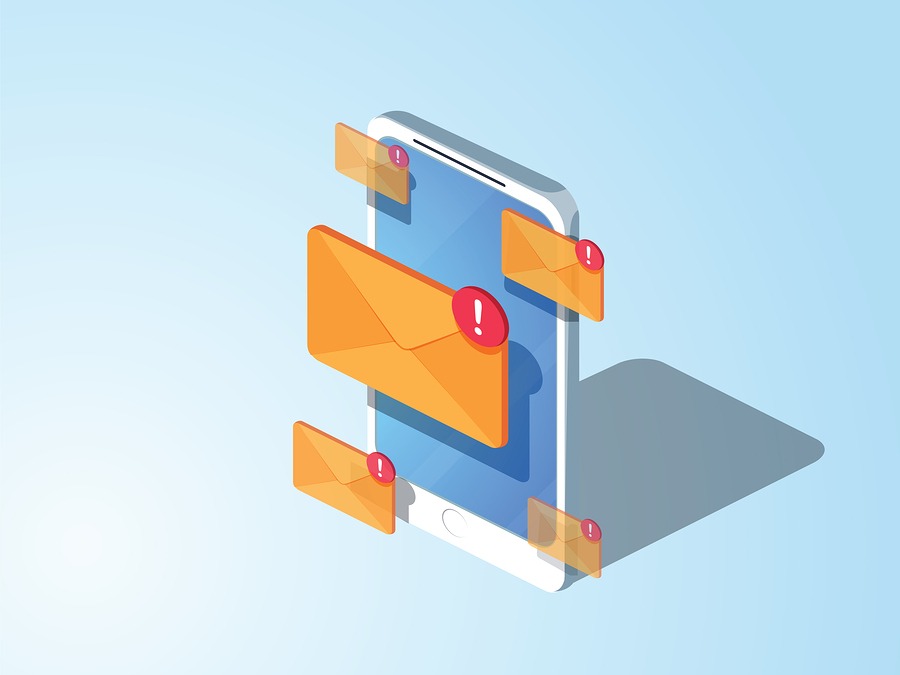
Now that we’ve covered tips for writing email drip campaigns, what can you do to increase sales throughout the email marketing campaign? Let’s look at a few things we’ve learned from designing our email drips over the years.
1. Target Your Campaigns – Find Out What Your Leads’ Needs, Wants, and Fears are
Every email marketing campaign needs a very specific purpose. It should align with something your leads want, need, or fear so you can connect with them emotionally.
- Wants: These are things your leads don’t have but keep on their wish lists. Do they want a better mousetrap? Are they interested in having fun? What are they willing to splurge on? And what do they want to learn?
- Needs: If your product caters to your leads’ actual needs, you have even more persuasive power. Needs include food, shelter, water, clothing, and transportation. They might not need your specific brand, but they can choose your brand to cover their needs.
- Fears: This is where pain points come in. If you sell weight loss products, you might mention the fear of remaining overweight. Or maybe you sell a software program that better organizes emails. You could mention your leads’ fear of spending too much time in their inboxes.
2. Try to Connect With Your Leads Using Other Channels, Such as Social Media
When it comes to growth hacking, you don’t want to divide and conquer. Instead, you want all of your channels to work in harmony.
For instance, using Hello Bar, you can use existing website traffic to promote your email list. Then, you can use your email list to promote pages on your website.
Don’t forget about social media, though. You can funnel traffic between your social channels and other online assets.
For instance, in your email drip campaigns, you can add “Follow me on Twitter” to your signature (with a link to your profile, of course). It’s a simple way to subtly let people know that you’re active on social.
You can also send leads to social via your website. Try adding a top bar to your site that invites people to follow you on Facebook.

3. Nurture Your Leads With Awesome Content Before Selling Anything
If you’re constantly asking people to buy, buy, buy, they’ll tune you out. It’s like television commercials. You pull out your phone during your favorite TV show’s commercial break.
Instead of nurturing your leads with requests to buy your product, teach them something valuable. Nurture leads with awesome content.
Make a list of the top six questions you get from your audience, whether through customer support, phone calls, or other channels. Answer those six questions in six drip emails.
Be generous with your knowledge. Don’t be afraid to give too much away because if you feel like you are, you’ve probably hit the right value threshold.
4. Offer a Free Trial and Close The Deal After the Email Campaign is Over
Email drip campaigns offer the perfect opportunity to use urgency to your advantage. If you offer a subscription or similar service, let subscribers know you’re offering a free trial over the next X weeks (the length of your drip campaign).
When the campaign is over, that’s when the free trial offer goes away. Mention the free trial in your P.S. or your signature, but don’t make it the main focus of your emails until the very last one. That’s when it’s time to use urgency to say, “If you want to test out our service, now’s the time! Get your free trial before it goes away.”
5. Pay Special Attention to Where Your Customers are In Their Buying Cycle
We mentioned before that it helps to segment your email list. You want people to get the right message at the right time.
If your lead has just become aware of your business, they are not ready to buy. You have to nurture that relationship through positive experiences.
For those subscribers, focus on education and entertainment. Subscribers who have been aware of your business for longer periods might appreciate product comparisons, coupons, and free trials.
What is the Customer Buying Cycle?
Your customer buying cycle is the series of touch points your leads make on their paths to becoming customers. How long does it take, on average? Where do they come into contact with your business?
For instance, the average customer might discover your website via a Google search or a click on a paid ad. The customer might follow you on social media, signup for your email list, and read your blog. Eventually, a call to action converts that lead.
6. Continue Offering Awesome Content to Your Customers
Share infographics, roundups of blog posts in your industry, links to research, and other compelling content your subscribers might enjoy.
You don’t have to create it all. Roundup emails are effective because they allow you to share valuable content from others and show your appreciation for their contributions to the industry.
The more awesome content you share, the more grateful your prospects become. In your email drip campaigns, you’re banking on reciprocity. “We’re going to share all this amazing stuff with you. Maybe you could buy one of my products?”
You don’t say it like that, of course, but that’s the balance you’re seeking.
7. Send Emails to Re-engage Your Inactive Prospects and Get Them Back Into Your Funnel
People go inactive for many reasons. They get busy, their interests change, they forget about your brand — whatever.
You can use drip email campaigns to bring them back into the funnel. Start by sending a brief, personalized email like this:
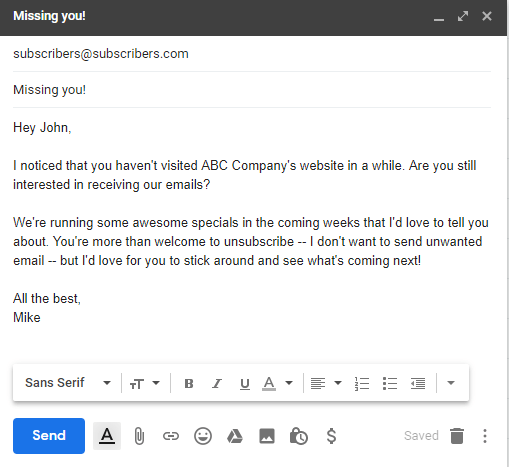
It’s friendly, engaging, and respectful. That’s the best way to loop in customers who might have fallen out of touch.
8. Find Out Exactly How Your Drip Email Campaign will Fit Into Your Marketing Efforts
Drip email campaigns don’t exist in a vacuum. As we mentioned above, you want to funnel traffic between your channels to create maximum engagement.
Maybe your drip campaign coincides with a new product launch. You can use similar content in social posts, paid ads, and blog posts to generate excitement and remain consistent.
9. Automate Your Drip Email Campaigns to Work Smarter
We’re big fans of automation. Without it, we’d have to work 60 hours a day. And that’s still impossible, right?
Use your email service to automate drip campaigns. After you set up the campaigns, you can add emails to them as they come in based on where they fit in the buying cycle.
10. Continuously Test Your Email Drip Campaigns
Are you tired of hearing us say it yet? Testing is a key function of making sure your email campaigns work. For instance, we recommend A/B testing your Hello Bar popups to fine-tune the creative.
You can do the same with your email drip campaigns. Slightly tweak each email (such as the subject line) and send two variations, each to half your subscribers. Which gets more opens? More click-throughs? This data can help you create better campaigns in the future.
11. Incorporate User Feedback to Improve Campaigns
Collect and analyze feedback from your recipients to refine your drip campaigns. Regularly solicit input through surveys, polls, or direct responses to understand what resonates with your audience and what doesn’t.
Use this feedback to adjust your messaging, content, and strategies to better align with customer expectations and preferences. Continuously integrating insights from your audience enhances the effectiveness of your campaigns, improves engagement, and drives better results over time.
You May Also Like:
- 15 Email Campaign Examples to Create High-Converting Campaigns
- Email Drip Campaigns: 10 Tips To Greatly Increase Sales Using Emails
Types of Emails in Drip Campaigns: Ideas and Examples

Believe it or not, there are several types of email drip campaigns from which to choose. You might be running a version of all of them at any given time, which is why we recommended marketing automation above.
Let’s look at some of the most important reasons and circumstances for setting up drip campaigns.
Welcome Drip Emails
When someone first subscribes to your email list, you want to make a solid impression. This is the time to wow your lead so they get excited whenever your name appears in their inbox.
We know — easier said than done.
We recommend using a welcome email sequence to briefly introduce your brand, provide a coupon right from the start, and share a valuable tip or strategy. Hit all the high notes to show that your brand is generous and not all about the sale.
Continue to provide that same value throughout the welcome drip campaign. You can then move your subscribers into another drip sequence like the one below.
Informational/educational Drip Emails
Consumers are really thirsty for information. We live in a DIY culture, right? People want to know how to do things themselves. They also love statistics, facts, and trivia.
Think of an informational or educational drip campaign this way: You want your subscribers to have the most interesting information to share at their next dinner party. Make them the smartest people in the room.
Again, look at the questions you receive from existing customers. You can also mine your blog and social comments.
We’re fond of running Quora searches. Find questions that generate a high level of engagement within your industry. Create your own article on that topic, then send it to your email subscribers. You could even write a really long piece, divide it into sections, and incorporate each part into your drip. It would create a conversational and relatable flow.
Nurturing Drip Emails
This type of drip email campaign is designed to urge consumers to buy your product or service. Email one might address a pain point or two, and email two could discuss a key benefit of your product or service.
Keep it going in subsequent emails by describing more benefits, sharing valuable information, and even explaining case studies. In the final email, offer a coupon or other offer your subscribers can’t pass up.
Inspirational/no-activity Emails
Marketers sometimes feel like cheerleaders. There’s no gentler way to put it.
You might have to pull out the pom poms and bullhorns to bring back people who haven’t been active in your emails lately. Maybe they’re deleting your emails unread or failing to click through.
Whatever the case, use wit and humor to re-engage your leads to you once again. You can also invite them to unsubscribe if they’re no longer interested. That’s fine. You don’t want to ruin your reputation by annoying people who don’t want to hear from you.
The point here, though, is to get your leads excited about your brand again. You might mention your latest Instagram activity or invite your leads to reply with questions or concerns.
Maintain an upbeat tone in these emails. Be open to user humor, and if appropriate, offer a “Welcome Back” coupon or other incentive.
Finish task/almost Finished Emails
This type of email drip campaign is highly effective when used before an event, such as a live webinar. You want to stoke the fire and get your leads excited. The finish line is almost here!
Send out weekly emails reminding your leads about upcoming events. Include a few teasers to whet their appetites for the information you’ll share.
Keep these emails very short. They’re kind of like calendar reminders but with more personality. If you want to use imagery, consider a countdown timer.
What-Is-Next Emails
Let’s say you’re three months away from a major product launch. You’re understandably excited, so why not share some of that enthusiasm with your subscribers?
Start an email drip campaign that gears up for the product launch. Send insider information, behind-the-scenes pictures, and other information to excite them.
Make them feel like they’re part of the process. You can direct them to polls or surveys to let them give their two cents about your decision.
Customer Milestone Emails
When your birthday comes around every year, you probably get a slew of “Happy Birthday” emails from brands that have collected your birth date. It feels silly, but it’s also welcome.
Many of those emails also contain celebratory coupons.
You can send drip campaigns for any customer milestones you like. For instance, you could send out a series of emails on the anniversary of the day your lead became a customer.
It is important to personalize these emails and make them celebratory. Don’t push your promotion too hard; instead, show gratitude to your subscribers.
Behavioral Trigger Emails
These emails activate when users take specific actions, allowing you to engage them with timely, relevant content.
For example, if a user is casually browsing a product but doesn’t make a purchase, you can send them a friendly email highlighting that product with additional details or a special offer. These emails help address immediate interests and can effectively drive conversions by reminding users of their initial intent.
Keep your messages concise and targeted, reflecting the user behavior. Incorporate personalized recommendations or incentives to increase the likelihood of a positive response.
Loyalty and Rewards Emails
Show your customers just how much you appreciate their ongoing support with engaging loyalty and rewards emails. Celebrate milestones like anniversaries, frequent purchases, or membership achievements with special messages expressing gratitude.
For instance, you might send an email that says, “Cheers to Your 1-Year Anniversary with [Brand]! As a token of our appreciation, enjoy a 20% Discount on us.” Make these emails heartfelt and personal, reinforcing the value of their loyalty and making them feel valued and special.
Remember! You Need to Focus on Collecting Emails First!
If you don’t have any email subscribers, none of the information in this article matters — at least not yet. You need to collect emails first to build a healthy email marketing campaign.
Hello Bar provides tons of tools to help you bring in more customers. All you have to do is sign into your account and select the email marketing goal.
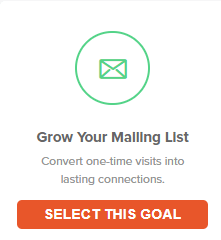
Next, create a top bar, slider, exit popup, or any other modal you wish. You can change the type of Hello Bar at any time.
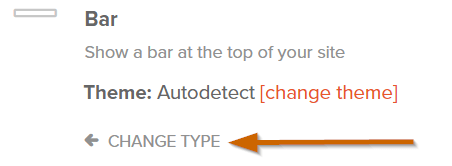
Just select the Hello Bar type that appeals to you.
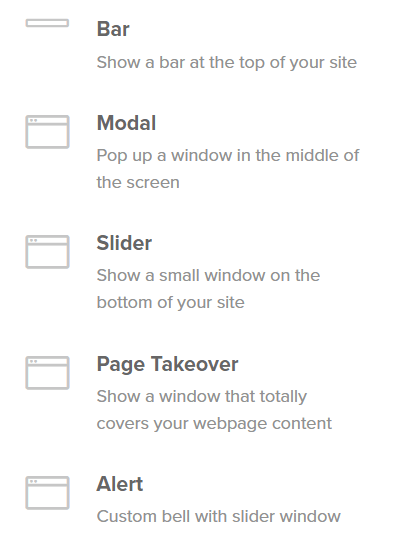
You can also change the theme you’re using for your Hello Bar.
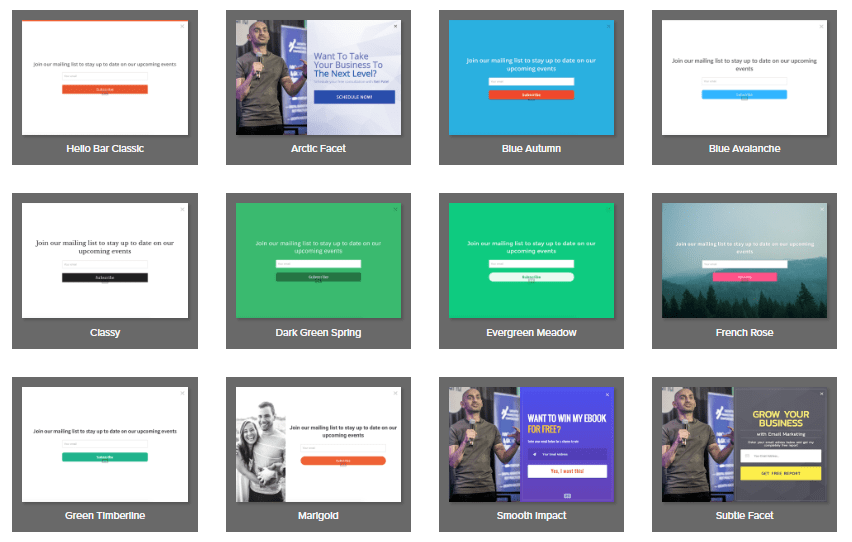
Once you have a theme you like, you can add text, upload images, change colors, and more to make sure the Hello Bar fits your brand perfectly.
A/B test different headlines and CTAs until you find the ideal combination. The more tests you run, the more accurate you get.
Don’t forget that you can use multiple modals. For instance, use a top bar and an exit intent popup to collect more emails.
You May Also Like:
- Email Copywriting: 19 Proven Formulas to Use on Your Next Campaign
- Ecommerce Email Marketing – 25 Tips to Increase Sales
FAQs
Q1. What are the key components of a successful drip campaign?
The key components include clear goals, targeted segmentation, personalized content, compelling subject lines, and strong calls to action. Automation and timing are also crucial for a drip campaign to be successful.
Don’t forget to monitor and adjust based on the performance metrics.
Q2. How can you segment your audience for more effective email drip campaigns?
Segment your audience by criteria such as demographics, purchase history, user behavior, engagement levels, or lifecycle stage. Tailor your email content to each segment’s specific interests and needs, improving relevance and engagement. For example, send product recommendations to recent buyers and re-engagement offers to inactive subscribers.
Q3. What types of content should be included in an email drip campaign to boost sales?
Include educational content, product recommendations, case studies, testimonials, special offers, and promotions. Ensure your content addresses customer pain points and provides solutions. It should also create value and build trust to drive conversions.
Q4. How can you measure the success of your email drip campaigns?
Measure success through open rates, click-through rates, conversion rates, and overall ROI. Also, track metrics such as email deliverability, engagement, and unsubscribe rates to measure effectiveness and identify areas for improvement.
Q5. What are some common pitfalls to avoid when creating an email drip campaign?
Avoid overly frequent emails, lack of personalization, and irrelevant content. Properly segment your audience to ensure your information is relevant to their interests and needs.
Using unclear calls to action and confusing messages are some pitfalls to avoid. Also, avoid failing to review and adjust campaigns based on performance data.
Conclusion
Whew! That was a ton of information, but you’re not armed to the teeth with knowledge about creating the ideal email drip campaigns for your audience. Feel better?
Feel free to bookmark this article and revisit it often. Keep A/B testing your email drip campaigns and signup forms. The more email addresses you collect, the more potential customers you’ll have waiting in their inboxes.
Remember, an email drip campaign is a series of emails tied together by a common theme. It’s a form of nurture marketing that helps you guide your prospects and leads toward the sale.
A drip campaign can be used for various purposes. It can bring in people who might have slipped off your radar, engage active customers, and educate newbies.
Writing an email drip campaign takes practice. Write them in one session for consistency, ensure high-quality content, and use short paragraphs and emails.
Don’t be scared to add that P.S. Leave your subscribers with something of value — sort of like dessert at the end of a delicious meal.
You can get personal with your subscribers, tell captivating stories, and link emails with common threads. Add great subject lines and consider using urgency.
If you follow my best practices, you’ll be on your way to writing awesome email drip campaigns. Then, you can use my list of occasions and circumstances to spawn a drip campaign.
Have you created an email drip campaign? What worked and what didn’t?






